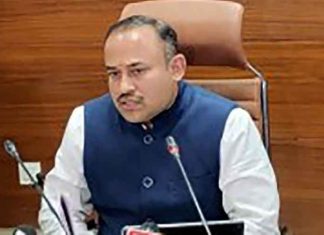New Delhi, May 13, 2020-
Researchers have developed a COVID-19 vulnerability index to identify where in India people are more at risk of infection due to socio-economic factors like low income or education levels, demographic factors, health and hygiene variables and environmental dimensions.
Most of the districts in Bihar, Jharkhand, West Bengal, Odisha, Madhya Pradesh, Chhattisgarh and Gujarat, and adjoining districts in Rajasthan and Maharashtra showed high vulnerability scores, according to the study by Swasti, a not-for-profit public health organisation.
The districts with higher vulnerability scores are typically characterised by poor socio-economic conditions, chronic poverty, and weak health systems.
High-vulnerability districts are those where COVID-19 is likely to spread rapidly, while also remaining undetected for longer periods.
“Post combating the scores of different variables, we arrived at a ‘Vulnerability Index’ score for each district. The vulnerability index highlights that there is a stark difference between the number of reported cases and the actual vulnerability of communities in these districts,” Dipankar Bhattacharya, Knowledge Catalyst at Swasti, said in a statement.
Moderate vulnerability is seen in northern districts of Karnataka, Eastern Maharashtra, Telangana, Andhra Pradesh and Eastern districts of Tamil Nadu, showed the findings released on Wednesday.
While the districts of Kerala, Himachal Pradesh, Haryana, Uttarakhand, Punjab, Jammu & Kashmir, and most districts of the north eastern states show relatively low vulnerability scores, it added.
The researchers hope that using this and similar analyses, it can be predicted where it is most critical to keep transmission rates low and focus on strengthening health system capacity.
While the risk factors that apply to individuals such as comorbidities and age are widely recognised, people generally have a limited understanding so far of other factors, at a community, demographic and/or environmental level, may result in higher risk of infection.
According to a global research, there are 15 indicators that affect the vulnerability of COVID 19 infection — socio-economic factors like low income or education levels, demographic factors such as population density and urbanization, health and hygiene variables like anemia levels or practicing handwashing, and environmental dimensions including temperature and relative humidity.
According to the study by Swasti, these variables, taken together, could account for 74 per cent of the variation in vulnerability to infection.
“The objective of the study is to minimise the impact of the pandemic and to do that it’s critical that we use our understanding of relative vulnerability to complement available data on exposure to infection,” said Angela Chaudhuri, Partner, Swasti.
“The research provides a footprint to Vulnerability index-based risk mapping, which is a useful measure to predict where it is most critical to be cautious, and to protect and prioritise strengthening health system capacity.” (Agency)
For YesPunjab updates on TELEGRAM, download TELEGRAM and CLICK HERE TO SUBSCRIBE




































































